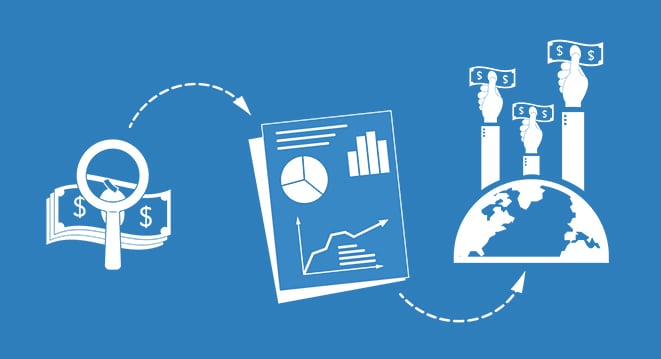Streamlined logistics are on the horizon as warehouses, vehicles and consumer expectations evolve.
Consider a future where many traditional aspects of logistics are a thing of the past. This is how some commentators see tomorrow’s delivery system thanks to accelerating developments in technology. Today, we’re spotlighting the main areas of evolution and disruption that are shaping shipping’s new normal and assessing what it means for your business.
On-demand warehousing
Gone are the days of paying for fixed warehouse space; a commitment that robbed businesses of shipping flexibility. The on-demand warehousing market is currently worth almost $26 billion in America, with the rise driven in large part by the demands of e-commerce.
Businesses are increasingly able to access technology and utilize warehouse space on an as-and-when needed basis, eradicating the costs of paying for footage that’s sitting empty. This will be a huge boost to efficiency across the logistics spectrum, optimizing costs and creating opportunities for delivery fleets to access multiple warehouses along the journey map to reduce, or even eliminate, empty miles (more on this below).
Purely transactional pricing combined with streamlined storage and fulfillment are promising the most cost-efficient, shipper-friendly warehousing that’s ever existed.
The rise of self-driving and ride-sharing fleets
The end of 2019 saw a self-driving delivery truck make a flawless, 12 state journey of 2,800 miles carrying a 40,000-pound load. It drove around the clock and overcame weather-based and man-made obstructions to complete its task in only 41 road hours.
A human “driver” was required, but their presence was only necessary to ensure refueling. This isn’t an isolated case. California, typically a trendsetter for the nation, has already issued automated vehicle test licenses to 66 companies as of May this year. Shipping departments stand to make big savings if this tech takes over delivery.
Taking that 2800-mile trip as an example, that would have cost a trucking company $1.69 a mile. The driver’s salary, benefits and bonuses comprise 43% of that. The 2800-mile trip would cost $4,732, but removing the human from the equation would lower that to $2,697.24. These huge carrier savings would, theoretically be passed along to shippers and, in turn, their customers.
Will road logistics have a choice if humans don’t show up?
Truck driver “shortages” and turnover rates have been high for years, and this employment sector entered 2020 to hot debate over the many factors that seem to fuel a lack of drivers. Two of these factors are empty miles — when trucks move without cargo and waste fuel and time — and 2- to 3-hour unpaid waiting times for loading/unloading.
A fully mechanized logistics framework that loads, unloads and drives via machine would eliminate many of those problems. There would be no complaining about not being paid during wait times, loading and unloading could be done more efficiently (palletizing, vanning and devanning are already heavily tech-dependent for speed) and empty miles would be significantly reduced by the increase in flexible warehouse space.
It’s not all about saving money; there’s also a humane side if machines take the wheel. Trucking is the most dangerous job in America, so, while logistics jobs may shift, lives will certainly be saved.
Shippers breaking free of set carrier restrictions
Could relying on specific partner carriers also become history? Apps like DashHaul, LaneHoney, Transfix and Cargomatic are giving shippers the power to see which trucks are nearest to them and the space they have available.
This lets businesses negotiate delivery space much more flexibly than working with a set carrier’s fixed routes and times. This disruptive tech could shake up big names like FedEx and UPS to offer more options and competitive pricing.
Leveraging logistics partners to the 5th degree
First-party logistics (1PL) is when no logistics are outsourced and a business is totally self-reliant. 2PL (second-party logistics) puts a short-term focus on a single outsourced task, and we’ve already gone into detail on 3PL in our previous article. 4PL and 5PL take logistics sourcing even further, creating relatively new options for shippers to leverage the technology and expertise of outside parties to make their own logistics better.
There’s a fine line between 3PL and 4PL, but the distinction is best described by the fact that 4PL partners give shippers access to the 4PL provider’s logistical tech and expertise and also those of their own extended network. 4PLs are also typically involved in the design and implementation of client logistics and have greater control of the shipper’s operations.
5PLs offer similar levels of network connectivity and management while shouldering equivalent levels of control over client logistics. 5PLs are more tech-centric because they focus more on the digital domain of e-commerce. The more tech-driven and electronic a shipper’s business is, the more suitable working with a 5PL provider will be.
71lbs provides technology for tomorrow’s logistics
There are more tech developments driving logistics than we have space to cover — namely tracking, transparency and customer expectations. Our Premium Tracking and Premium Analytics provide the level of clarity and connection that satisfies your logistical needs and consumer demands. Connect with us and let our team be your next technology investment.
At 71lbs, we focus on two things: a) helping customers save money on shipping, and b) helping customers understand their shipping costs. We provide refunds and savings on shipping insurance, freight and imports, among other benefits. Our automated dashboard displays easy-to-understand shipping costs and insights so you can make better business decisions. Drop by the contact page to get in touch!



